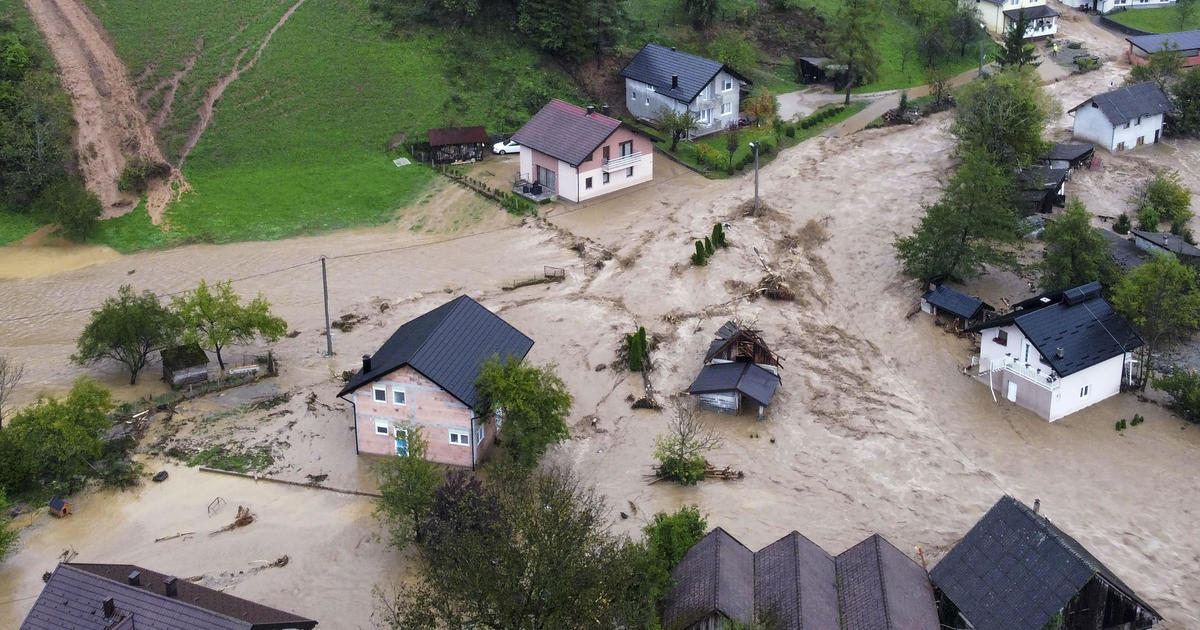Bosnia experienced devastating floods and landslides following a severe rainstorm on Friday night, resulting in significant loss of life and widespread damage. The sudden surge of water overwhelmed homes, leaving many residents stranded and unable to escape the rising waters. The event highlights the urgent need for improved infrastructure and disaster preparedness in the region, particularly in light of the increasing frequency and intensity of extreme weather events linked to climate change. The scale of destruction is comparable to events witnessed during the Bosnian War, underscoring the gravity of the situation.
Devastating Impact of the Floods and Landslides
The unprecedented rainfall led to catastrophic flooding and landslides across central and southern Bosnia. Towns and villages were inundated, leaving homes submerged and infrastructure destroyed. The rapid onset of the flooding left many residents with little time to react, forcing them to seek refuge on upper floors or higher ground as waters swiftly engulfed their homes and possessions.
Eyewitness Accounts
Residents described harrowing experiences of being woken by the rising waters, with little time to react or escape the rushing torrents. Accounts included stories of losing cherished pets and possessions swept away by the floodwaters. The chaos and fear experienced by the communities affected underscore the immediate and severe impact of this natural disaster. The speed with which the flooding occurred caught many completely off-guard, leaving them trapped and vulnerable.
Infrastructure Damage
The storm caused extensive damage to roads, railways, and other critical infrastructure, isolating affected communities and hampering rescue and relief efforts. Power outages and disruptions to mobile phone networks further compounded the challenges faced by emergency responders and residents alike. The damage to infrastructure also highlighted the vulnerability of Bosnia’s infrastructure to extreme weather events and the importance of robust and resilient systems to withstand such shocks.
Rescue Efforts and the Humanitarian Response
Immediate rescue operations were launched by local emergency services, supported by the army and volunteers. The scale of the disaster, however, presented significant challenges, requiring a coordinated response on both a local and national level. Numerous casualties were reported and sadly, the final death toll is not yet clear, as some victims are still being identified and others reported as missing.
Challenges Faced by Rescuers
Rescuers faced difficult conditions due to the widespread damage and limited access to affected areas. The loss of power and communication networks hampered coordination efforts and made rescue operations far more complex. Road closures meant access to several towns and villages was severely limited, delaying rescue efforts in several areas. The sheer volume of destruction caused major logistics difficulties.
International Aid and Support
Given the significant challenges and casualties, international support for the relief effort became crucial. Countries pledged financial aid, offered to provide supplies and personnel and extended expressions of solidarity with the affected population.
The Role of Climate Change and Future Preparedness
The intensity of the rainstorm and subsequent flooding is linked to the impacts of human-caused climate change, with increased temperatures leading to more intense precipitation events. The prolonged period of drought prior to the storm exacerbated the situation, making it difficult for the parched land to absorb the resulting rainfall.
Understanding the Climate Connection
Scientists are increasingly linking climate change to the increase in both frequency and severity of extreme weather events such as floods and heatwaves. These events are a stark reminder of the importance of addressing climate change to lessen the impact of these increasingly dangerous occurrences. Preparedness in addressing the impacts of the changing climate will improve response, decrease casualties and protect vital infrastructure.
Investing in Resilience and Adaptation
The devastation caused by these floods underlines the need for significant investments in climate change adaptation and disaster risk reduction strategies. This includes strengthening infrastructure, developing early warning systems, improving community preparedness, and undertaking land management that minimizes risks, while maximizing the capacity to deal with such occurrences. Long-term strategies focusing on sustainability and resilience must become a national priority for both present and future generations.
Takeaway Points
- The floods and landslides in Bosnia highlight the devastating consequences of extreme weather events.
- Climate change is exacerbating the frequency and intensity of such events.
- Effective disaster preparedness and risk reduction strategies are crucial for mitigating the impacts.
- International cooperation and support are essential for assisting affected communities in the recovery process.
- Investing in climate resilience is a necessity to safeguard lives, livelihoods, and infrastructure.




